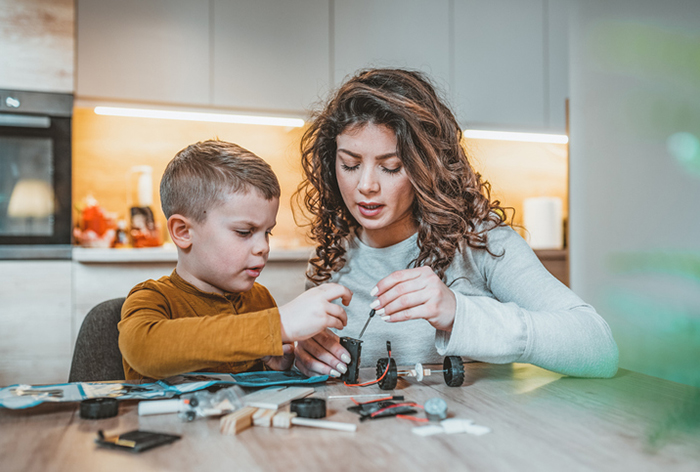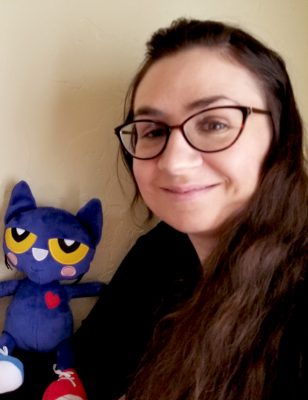STEM at home: Learning anywhere and everywhere
Posted on May 19, 2020 at 6:00 am

By Alison Johnson
The DIY approach to learning fun activities at home can be a great boredom buster.
We miss having your kids and families at our in-person library programs. You are what make those programs so enjoyable and interesting for us! And you can continue to explore STEM at home.
Here, I share the resources to do some of the STEM activities that we had planned for our library programs for kids, which include exploring the science of disgusting and gross things, discovering the scientific method with interactive experiments, and taking apart an old toaster to see the inner workings of engineered devices.
GROSSOLOGY
Prepare to be grossed out! Grossology is all about the disgusting processes of human physiology. If you really want to get your kids’ attention then try something that is slimy, stinky, or crusty to hook them in!
Grossology is not just about really gross things. This look at the things we consider gross has the goal of teaching science and bodily processes to kids—the grossness is just a bonus. There are interactive experiments and activities featuring boogers, belching, poop, spit, farts, and snot that you can do at home.
Nova has their own YouTube channel titled Gross Science, which has short videos on a variety of subjects. One video which was particularly fascinating is titled Three Ways Pee Could Change the World. It really brings to light how powerful one of our daily bodily functions can be. Depending on the age of your child, you may wish to be selective with these videos because some may be more appropriate for middle grade and older students.
If you really want to get your hands dirty though, check out this digestive experiment. (This one is really great! Don’t let the ick factor fool you.) This experiment takes kids through a simulated digestive process from start to finish and of course ends in making poop. This is really a very messy experiment that uses some kitchen items (and panty hose) and simple food ingredients, so be prepared for giggles during and washing up afterward!
I could not leave out, you guessed it, slime! Slime may just be the coolest thing on the gross science list. If you have any slime makers in your family, try out these activities to find out everything you did not want to know about mucus and snot. Believe me there will be information you wish you never knew. The kids will have fun making their own snot slime with many different recipes to choose from. These slimy recipes will make your kids giggle and say ewww!
OverDrive also has eBooks for all ages to check out. Here are two gross reads that are likely to keep your kids following you around the house telling you gross facts all day (You’re welcome!).
- Gross Science
Projects, by Kelly Milner Halls (Project STEAM) - Stink It Up! A Guide to the Gross, the Bad, and the Smelly,
By Megan McDonald
HANDS ON WITH THE SCIENTIFIC METHOD
When you have a hunch about something, how do you go about proving it scientifically? The scientific method shows kids how to think like a scientist!
These two videos Fun and Easy Science Experiment for Kids – Teaching the Scientific Method to Children and Science at Home for Kids: Easy Experiment to Teach Scientific Method to Kindergarteners take you through very simple science experiments and walk you through talking about the Scientific Method with younger kids.
For older kids the library also offers the digital resource Gale in Context: Science, which has a great overview of the Scientific Method. It brings together resources that offer experiments, images, videos, news, magazines, websites, and audio. Science in Context is one of my favorite resources because it brings together information in so many different formats. The best part has to be the experiments though!
For even more activities or experiments to practice the scientific method, World Book is the digital resource for you. More than just an encyclopedia, World book provides Activity Corner and Science Power, two categories that have great collections of science activities and information. There is so much fun, scientific stuff in World Book that you can sometimes get sidetracked.
These two eBooks in OverDrive introduce kids to different science disciplines such as chemistry, botany, astronomy, and environmental science, while teaching the scientific method.
- Ada Twist’s Big
Project Book for Stellar Scientists, by Andrea Beaty - 11 Experiments That
Failed, by Jenny Offill and Nancy Carpenter
TAKE IT APART
The technology and engineering parts of STEM can be studied by dismantling and taking apart everyday items. Kids can have fun exploring the mechanics of appliances and electronics to discover how they work, especially when they get to tear them apart!
For this experiment, spread out a tarp and try it yourself with items such as old keyboards, DVD players, clocks, and dancing solar powered toys. Be sure to wear gloves and protective eyewear. And just make sure you choose a device or appliance that is already broken, or one that you are okay breaking and never putting back together again! I can assure you that kids are not the only ones who find this a fascinating project.
Repair guides are also useful for take-it-apart challenges and also for fixing things. They can help you figure out what you are seeing when looking at the innards of a device. You can look at pictures of components to see if you can identify them inside what you have taken apart. Challenge your kids to find out where the device gets power from or how it stays cool.
If you have an old computer to take apart here is a video that introduces the parts inside of computers: Parts of Laptop & Desktop Computers by Kid.
There are also eBooks to guide kids through mechanical and engineering concepts in OverDrive.
- Rosie Revere’s Big
Project Book for Bold Engineers, by Andrea Beaty - National
Geographic Readers: Robots, by Melissa Stewart - Nick and Tesla’s
High-Voltage Danger Lab, by Bob Pflugfelder and Steve Hockensmith
I invite you to invade your kitchen with slime, take apart an old keyboard or alarm clock, do an experiment, and read a book.
During these times of staying at home, I hope you continue to learn anywhere and everywhere!

Alison Johnson is an Education and Enrichment Librarian who creates programming and events for ages 8–18. This means she gets to play with everything, including paint messes and mini robots. When she has free time she enjoys watching anything science fiction, hiking trails, and reading with a cup of tea.
Tags: books, caregivers, deconstruct, engineering, experiments, gross, grossology, kids, mathematics, overdrive, parents, reading, science, science in context, scientific method, STEM, technology, teens, tweens, World Book
